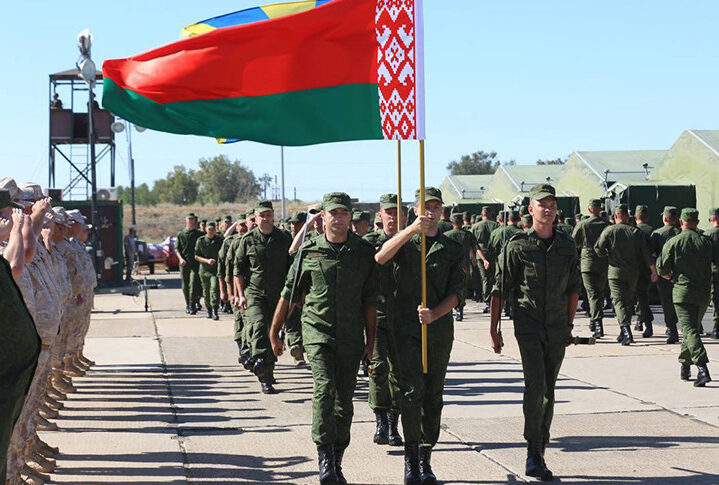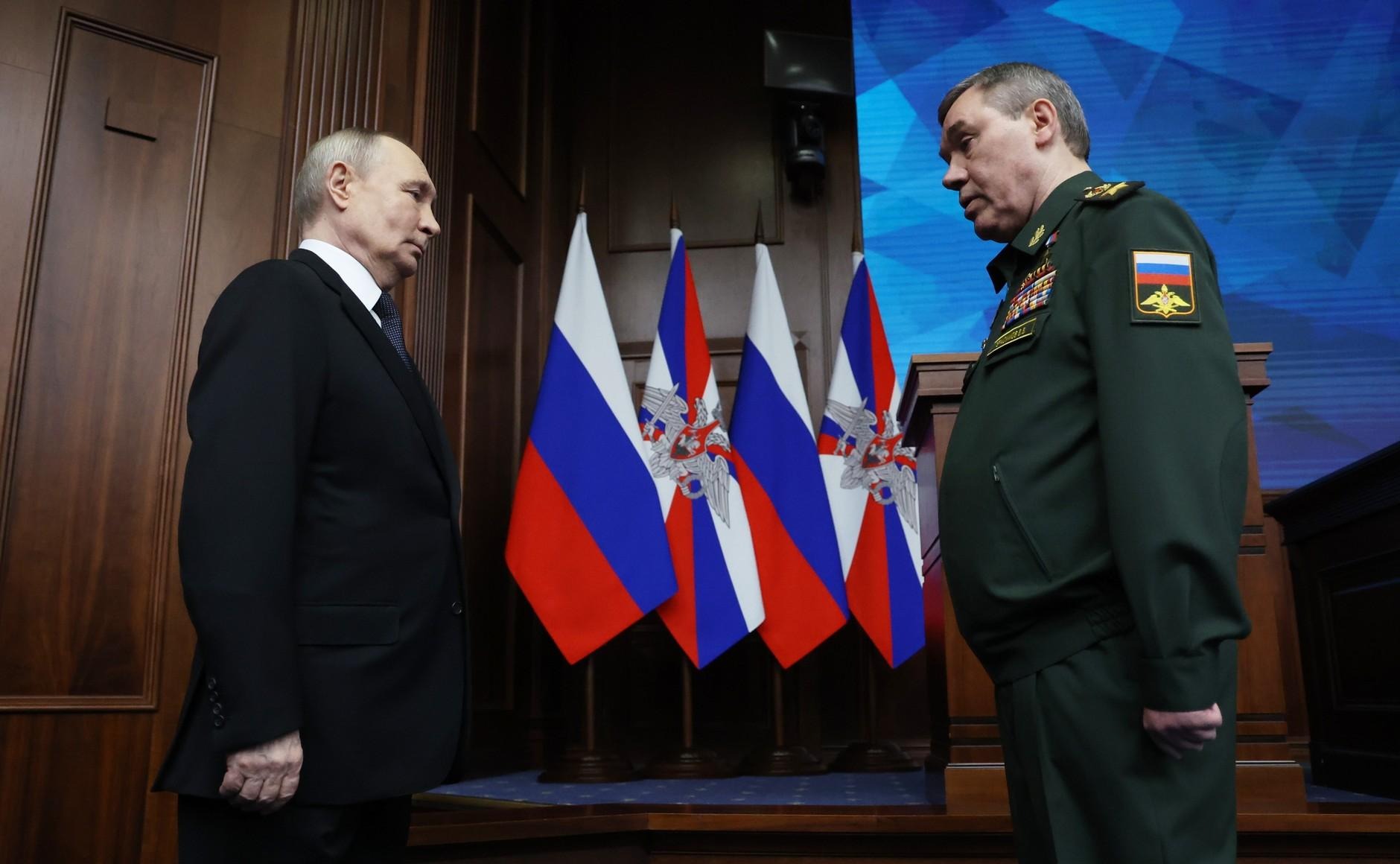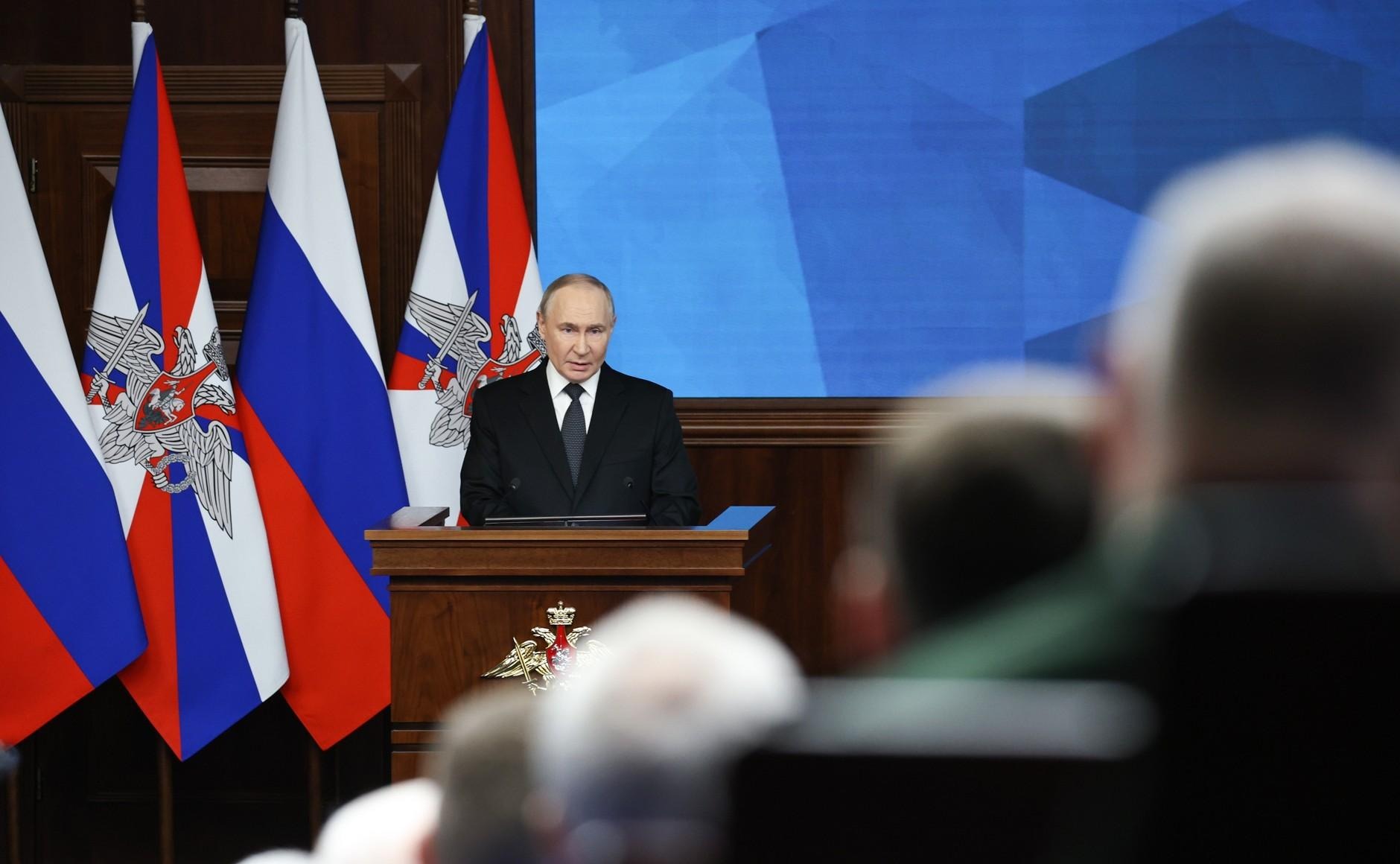
Russia and Belarus Hold Joint Non-Strategic Nuclear Exercises (Part Three)
Russia and Belarus Hold Joint Non-Strategic Nuclear Exercises (Part Three)
(Part One)
(Part Two)
Executive Summary:
- The second phase of the joint non-strategic nuclear exercises between Belarus and Russia sought to improve combat readiness and disentangle deployment tasks with tactical nuclear weapons in the event that hostilities in Ukraine spill out into Belarusian and/or Russian territory or the West launches a nuclear attack.
- Russian units practiced tasks according to the plans for transitioning from peacetime to wartime. Belarusian units practiced the wartime protocols in a state of high alert, in which nuclear munitions have been pre-deployed near launch platforms for immediate operational use.
- Russian experts have revealed that the central element of the third phase of the exercises will likely include a demonstration nuclear strike at the Novaya Zemlya test site to deter the West from sending further aid to Kyiv and expanding its involvement in the war.
On August 13, the Belarusian and Russian air forces kicked off joint military exercises at the Ashuluk training ground in Belarus (Belta, August 13). The exercises come as the second phase of joint non-strategic nuclear exercises, which started this summer, has come to a close. On July 3, Belarusian leader Alyaksandr Lukashenka said that the rapid checks of the joint Regional Grouping of Forces (RGF) of Belarus and Russia, the first-ever training of non-strategic nuclear forces in the history of Belarus, showed that the defense capabilities of the Union State are stronger than ever (Belta, July 3). He then summed up the results of the second phase of the exercises with non-strategic nuclear forces that started in May (see EDM, June 17). Joint exercises between Belarusian and Russian forces have picked up in recent months, with Chinese forces joining the “Attacking Falcon” anti-terrorist exercise in July (see EDM, July 15). Belarusian and Russian officials claim the exercises are necessary to respond to Western escalations in Ukraine and elsewhere. In the West, these exercises have inflamed fears of Russia’s war spreading deeper into Europe.
One of the last known episodes of the second phase of the exercises started on June 10 (TASS, June 10). Belarusian and Russian forces began working out issues of ensuring combat readiness with nuclear training ammunition (e.g., dummy warheads and aerial bombs). The two sides also worked out issues of joint preparation of Belarusian units by Russian nuclear support units for the potential use of tactical nuclear weapons (TNWs). Specifically, mobile formations of the 12th Main Directorate of the Russian Ministry of Defense (known as 12th GUMO and primarily responsible for nuclear munitions), together with Belarusian units, ensured the delivery of training warheads to field storage points of a missile brigade and an operational airfield of assault aircraft. According to Lieutenant General Igor Kolesnikov, head of the 12th GUMO, the tasks for ensuring combat readiness with nuclear training ammunition were successfully carried out (T.me/mod_russia, June 13).
During the second phase, at least one missile battalion equipped with the Iskander-M operational-tactical missile system and a squadron of Su-25 fighter jets were among the Belarusian carriers of TNWs. One artillery battalion of the 336th Rocket Artillery Brigade (Osipovichi), armed with Polonez-M multiple launch rocket systems, was also involved in the training (Belvpo.com, June 11). Pavel Muraveiko, chief of the Belarusian General Staff, noted that Iskander missile systems and corresponding units moved to designated positions along with special ammunition and docked their missiles. Military aviation did the same (T.me/modmilby, June 12). These units were notified of a prospective strike only 30 minutes before launch, indicating that the warheads had been pre-deployed to be launched from a state of high alert.
Meanwhile, a missile unit from Russia’s Leningrad Military District practiced obtaining and using special training ammunition for the Iskander-M missile system, equipping launch vehicles with them, and secretly moving to designated positions to prepare for missile strikes. Some crews of the Russian Baltic Fleet were also involved, equipping sea-launched cruise missiles with special training warheads and entering designated patrol areas (TASS, June 10).
Officially, these exercises were aimed at maintaining the readiness of personnel and equipment for the Russian TNWs on Belarusian soil to ensure the sovereignty and territorial integrity of the Union State in various scenarios (TASS, June 11). Muraveiko stressed that the Belarusian Armed Forces are ready, in agreement and coordination with Russia, to strike the enemy with non-strategic nuclear weapons in the event of full-scale aggression against the Union State (Belvpo.com, June 18). Belarusian Defense Minister Viktor Khrenin asserted that the expanded involvement of the Belarusian Armed Forces in the second stage of exercises was necessary due to the increase in regional tensions coming from Western provocations. In particular, he mentioned the West’s aggressive military policy, unwillingness for constructive dialogue with Minsk, failed attempts to drag Belarus into a “color revolution,” and alleged plans for the use of military force against Belarus (T.me/modmilby, June 10).
In July, Kolesnikov and Vyacheslav Kruglov, a retired major general and fellow at the 12th Central Scientific Research Institute of the Russian Ministry of Defense, gave some clues to the perceived threats emanating from the West. They argue that the recent deployment of new US and North Atlantic Treaty Organization (NATO) formations in Poland, Romania, the Baltic states, Finland, and Sweden is an operation to prepare the West for direct military conflict with Russia and Belarus. NATO’s blockade of Kaliningrad is seen as a provocation and possible pretext for such a conflict (Kolesnikov and Kruglov, Voennaya Mysl, July 2024).
Poland’s blockade of cargo traffic transiting from Belarus has been another justification for the joint nuclear exercises (Belarusinfocus.pro, June 24). Lukashenka has repeatedly said that such a blockade and sanctions are a form of aggression against Belarus (Belta.by, May 20). Earlier, Muraveiko pointed out that Belarus has every reason to use weapons to “break through the vital corridor” for the transit of goods through Lithuania (Minsknews.by, October 24, 2023).
Kolesnikov and Kruglov also contend that the United States and NATO are secretly preparing to unleash nuclear war against Russia and that Moscow and Minsk need to take measures to counter these plans. This starts with ensuring the combat readiness of all Russian and Belarusian nuclear forces and their special support systems and requires improving tactical methods of action, including maneuverable ones, to escape and defend against potential enemy strikes (Kolesnikov and Kruglov, Voennaya Mysl, July 2024). The scenario undergirding the second phase of the nuclear exercises thus proceeded from the conclusion that military hostilities would soon spill over into Belarusian and Russian territory.
Even so, Alexei Arbatov, head of the Center for International Security at the Moscow-based Institute of World Economy and International Relations, points out that no real launches were carried out during the exercises. The proper handling and preparation of TNWs seemed to be the primary tasks. According to Arbatov, the exercises are a signal to the West, and, for the first time, they were accompanied by an official statement from the Russian Foreign Ministry expressing hope that the exercises would “sober up [Western] hotheads.” Arbatov claims that Moscow has warned Western leaders directly about the serious consequences of a NATO military presence in Ukraine and if the alliance allows Ukrainian units to strike Russian territory with long-range systems and munitions. Thus, he concludes that the deployment of NATO troops in Ukraine would mean direct conflict with Moscow, which could escalate to the nuclear level (RBC, June 1).
Dmitry Trenin, a research professor at the Moscow Higher School of Economics, agrees with this assessment. He believes that the deployment of Russian tactical nuclear forces in Belarus in 2023 was the first practical step to raising the stakes in the proxy conflict with the West and that these non-strategic nuclear exercises are another warning signal. Trenin believes that the logical conclusion of the exercises would be to test non-strategic nuclear weapons at the Novaya Zemlya nuclear test site off Russia’s northern coast during the third phase (Russia in Global Affairs, July 1).
The Russian expert may be right, as it would appear that the demonstration of a nuclear strike at the Novaya Zemlya test site (see EDM, October 24, 2023) is scheduled for the third phase of the joint exercises (see EDM, June 17). If so, the third phase is sure to set off alarm bells in the West regarding possible nuclear provocations from Russia and/or Belarus and may trigger a response from Belarus’s European neighbors.


